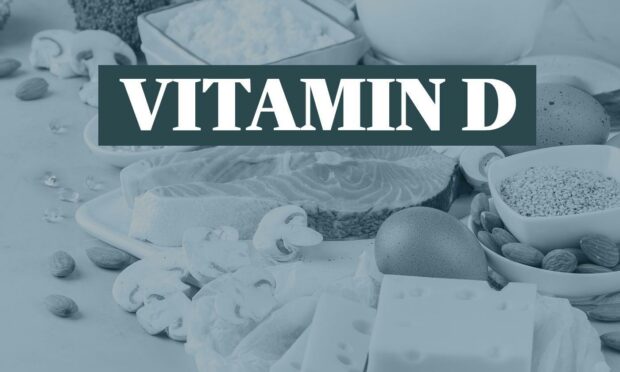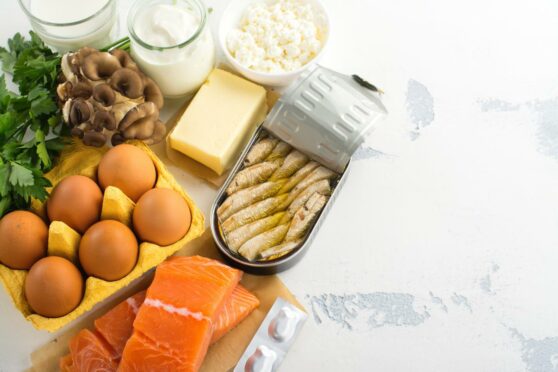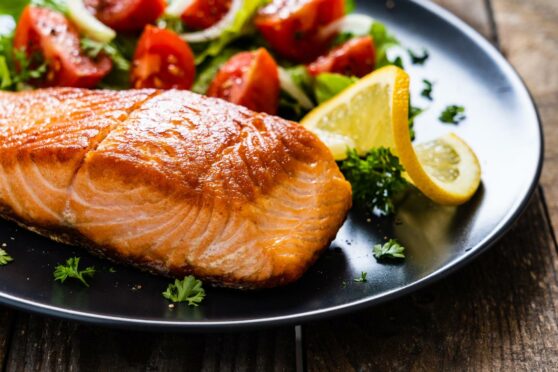Vitamin D, a fat-soluble vitamin that is stored in our body, is well-known for its essential role in supporting bone health.
It helps with calcium absorption and laying down the mineral on the bone, and is also really important for our immune system as it helps to regulate immunity.
There are increasing studies showing the role that vitamin D plays in cardiovascular health, type two diabetes, mind, memory and mood, and gut and hormonal health.
Our skin makes the biologically active vitamin D3 – Vitamin D2 and D3 are the two main forms of vitamin D – when it comes into contact with the sun’s UVB rays, which then hit the skin and set up a process of reactions that produce vitamin D.
So what happens when the winter season arrives and those of us in Scotland are left with next to no sunlight?
Nutritional therapist Laura Leslie, from Kintore, who qualified from the College of Naturopathic Medicine in 2014 with a Diploma in Naturopathic Nutrition and a Diploma in Naturopathy, explains the benefits of vitamin D, how to boost our levels this winter and what steps to take if we are deficient.
What foods contain vitamin D?
Dietary sources of vitamin D “are limited” says Laura.
However, vitamin D2 is present in plants and yeast, while D3 comes from animal sources.
The following foods contain D3:
- Oily fish: salmon, herring, mackerel and sardines
- Egg yolk
- Butter
- Certain algae and lichen species
Nutritional therapist Laura Leslie.
“For those who follow a plant-based diet, certain algae and lichen species now provide a natural source of D3,” the 39-year-old added.
“And mushrooms can be a source of D2 if they have had enough sun exposure.
“Ultimately, the body’s own production is many times greater than absorption from food.”
How do I know if I am low in vitamin D?
Laura says lower immunity is “the most obvious” physical sign that an individual could have a deficiency.
It is also reported that symptoms of vitamin D deficiency can include muscle weakness, pain, fatigue and depression.
“If someone is low in vitamin D, their immune function may be poor and they may not recover as well from infections,” Laura added.
“They may be more prone to autoimmune conditions and allergies.”
The 39-year-old advises anyone that suspects they are deficient in vitamin D to speak to their GP to get their levels checked or order a test kit online to do at home.
What can I do to boost my levels?
Because of the lack of sunlight in Scotland’s colder climate throughout the winter months it is much harder for the body to absorb much-needed vitamin D.
For anyone that wants to boost their vitamin D levels, supplements are a great way to do this.
It is recommended that 400 IU or 10 micrograms of vitamin D is taken daily by children over four and adults during the autumn and winter.
The elderly especially are encouraged by the government to take supplements as the skin’s ability to make vitamin D lessens with age.
Laura said: “If we lived in a warm climate, we would store enough vitamin D during the sunny months and use those stores during the winter.
“The strength of the sun is an important factor, season and latitude are both important factors when thinking about the production of biologically active vitamin D3.
“In the winter months, it is very hard to get vitamin D from the sun. I would supplement in practice depending on the person and testing is a great way to check levels before doing this.
“You can get tested either through a GP or a simple finger prick test that you can order online.
“400 IU or 10 micrograms of vitamin D is the recommended daily allowance, but an individual’s needs may be more than this depending on various factors such as sun exposure, immune system function, the time of the year, their skin tone, and so on.
“This is why it is important to test before supplementing.”



